Day-129 | Daily MCQs | UPSC Prelims | CURRENT DEVELOPMENTS
[WpProQuiz 139]
[WpProQuiz 139]
[WpProQuiz 138]
[WpProQuiz 137]
THE CONTEXT: According to National Legal Services Authority, that it is committed to deliver prompt and inexpensive justice to the citizens. Recently, it has decided to lay more emphasis on contribution of National Lok Adalat in effectively reducing the number of pending cases through Alternative Dispute Mechanisms.
THE STATUS OF LOK ADALAT:
The empirical Data:
Technological Advancements:
Value Addition:
About Lok Adalat
What is an ADR?
THE CONTEXT: Scientists are warning that we are in the early throes of another such annihilation event. Unlike any other, this sixth mass die-off — or Anthropocene extinction — is the only one caused by humans, and climate change, habitat destruction, pollution and industrial agriculture all play a hand.
THE EXPLANATION:
LOSS OF FOOD SECURITY
SOIL FERTILITY
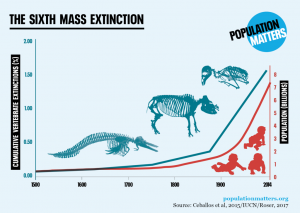
ATER SHORTAGES AND NATURAL DISASTERS
THE CONTEXT: For the first time in eight years, Jharkhand reported a death due to kala azar in the state, even as the total cases continue to decline. While 752 cases were identified as positive in 2015, the number of provisional cases last year till November 2021 was 242, as per data on the National Centre for Vector Borne Disease Control portal.
THE EXPLANATION:
About the Kala Azar Disease:
Initiatives were taken by Government of India

THE CONTEXT: Scientists from Italy are using grime-eating bacteria to restore classical art. Art restorers have usually employed chemical agents and, more recently laser techniques, to remove dirt, oil, glue, or pollutants from monuments, stone works, and paintings.
THE EXPLANATION:
Since the 1980s, when researchers first used the bacteria Desulfovibrio vulgaris to clean a marble monument at the Cave Hill Cemetery in Louisville, US, the role of micro-organisms has been recognised in protecting the artistic heritage of humanity.
Calling in the bugs

Cleaning of Taj Mahal:
Q1. Which of the following is not compiled by the Labour Bureau in the Ministry of Labour and Employment?
a) CPI for Industrial Workers (IW)
b) CPI for Agricultural Labourer (AL)
c) CPI for Rural Labourer (RL)
d) CPI (Rural/Urban/Combined)
Answer: B
Explanation:
THE CONTEXT: The demand has grown louder to carve out a separate state of ‘Greater Tipraland’ for the indigenous communities in Tripura under Article 2 and 3 of the Constitution.
THE EXPLANATION:
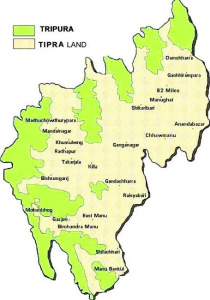
What is their main demand?
What does the Constitution say?
How did the demand originate?
THE CONTEXT: The Mallard or the wild duck with an iridescent green or blue-headed plumage was spotted in the Hyderabad.
THE EXPLANATION:
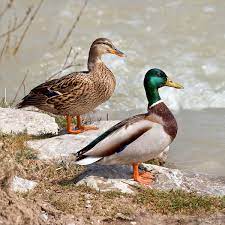
Presence in India: Mallard is found in the north and central part of India. It can also be spotted in the Madhav National Park, Panna National Park, Nameri National Park, Bharatpur Bird Sanctuary and Hemis National Park in India.
Habitat: Mallards prefers shallow inland waterways, such as ponds, lakes, rivers, reservoirs, and marshes.
Diet: Mallard are omnivorous and feeds on seeds, plants, shoots, buds, grain, acorns, aquatic invertebrates and insects. In most parts, humans provide them abundant food throughout the year.
Protection Status:
THE CONTEXT: China’s status as a ‘developing country’ at the World Trade Organization (WTO) has become a contentious issue with a number of countries raising concerns over the upper middle-income nation deriving benefits reserved for developing countries under WTO norms.
THE EXPLANATION:
The concerns have been raised over the ‘least developed country’ (LDC) status, with Bangladesh potentially losing this tag after surpassing India in terms of GDP per capita.
What are the benefits of ‘developing country’ tag?
How is a ‘developing country’ decided and why are some against China being classified as one?
What are the benefits of LDC classification?
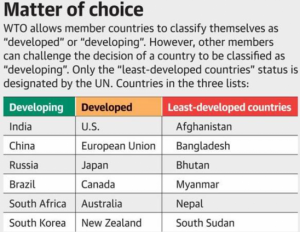
Status of India:
India has self-designated itself as a developing nation and is accordingly, classified by the World Bank as a lower-middle-income economy.
THE CONTEXT: UNESCO announced that on the occasion of World Hindi Day, UNESCO’s World Heritage Centre has agreed to publish Hindi descriptions of India’s UNESCO World Heritage Sites on WHC website.
THE EXPLANATION:
World Hindi Day
How is World Hindi Day different from National Hindi Divas?
World Heritage Sites
Q1. Consider the following statements about Henley Passport Index:
Which of the statements given above is/are correct?
a) 1 only
b) 1 and 2 only
c) 2 and 3 only
d) 1, 2 and 3
Answer: a)
Explanation:
levels of PM 2.5 and PM 10 in certain cities (called non-attainment cities) which fail to meet
the National Ambient Air Quality Standards (NAAQS) in five year period.
| [WpProQuiz 136] |
[WpProQuiz 135]
[WpProQuiz 134]
[WpProQuiz 133]
THE CONTEXT: The Department of Administrative Reforms & Public Grievances (DARPG) and Ministry of Electronics & Information Technology (MeitY), Government of India, in association with the State Government of Telangana organized the 24th Conference on e-Governance (NCG) 2021.
THE EXPLANATION:
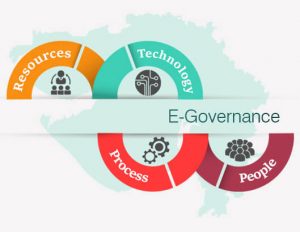
HYDERABAD DECLARATION:
The Conference resolved that Government of India and State Governments shall collaborate to:
Value Addition:
What is e-Governance?
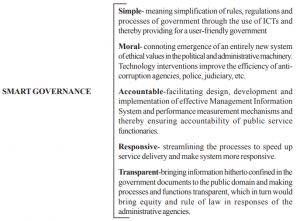
SMART governance, thus, helps in:
THE CONTEXT: Researchers from the University of Southern Denmark have discovered that oxygen is also produced without sunlight, possibly deep below the ocean surface. Researchers have discovered that some of the invisible microorganisms living in water columns produce oxygen in an unexpected way.
THE EXPLANATION:
Scientists say there would be no oxygen on Earth were it not for sunlight: the key component in photosynthesis.
Nitrogen cycle
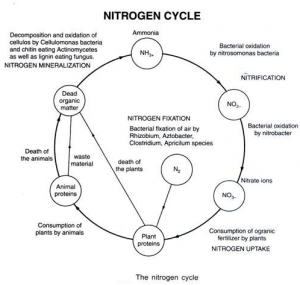
What are Microbes?
A microbe, or “microscopic organism,” is a living thing that is too small to be seen with the naked eye. We need to use a microscope to see them.It is used to describe many different types of life forms, with dramatically different sizes and characteristics:
Microscopic Animals
The human body is home to microbes from all of these categories. Microscopic plants are also considered microbes, though they don’t generally live on or in the human body.
THE CONTEXT: The Assam government issued a preliminary notification for adding 200.32 sq. km to the 78.82 sq. km Orang National Park as it is to be expanded to more than thrice its existing size; to include Gharials, dolphins, turtles.
THE EXPLANATION:
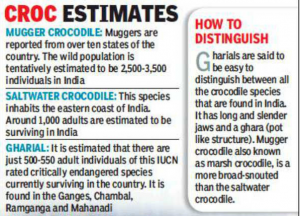
About Gharials
Gharials (or gavials) are a type of Asian crocodilian distinguished by their long, thin snouts. Crocodilians are a group of reptiles that includes crocodiles, alligators, caimans, and more.
India has three species of Crocodilians namely:
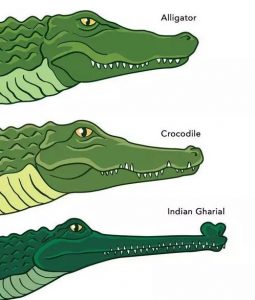
Habitats include:
Conservation Efforts:
Orang National Park
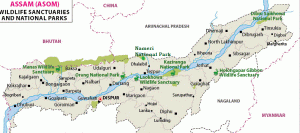
THE CONTEXT: According to the Hindustan Aeronautics Limited (HAL), HAL expects to deliver all Final Operational Clearance (FOC) variant aircraft to the Indian Air Force (IAF) in 2022 pending some systems from Israel, while the LCA-MK1A is expected to take flight in June 2022. There is another 20 to 24 months of testing after which deliveries would begin with manufacturing activities going parallel to the testing.
THE BACKGROUND:
Tejas aircraft Performance

What is the status of the LCA programme?
What is the way forward?
THE CONTEXT: According to Ecuador’s Geophysical Institute the tallest mountain in the Galápagos islands has erupted, spewing lava down its flanks and clouds of ash over the Pacific Ocean.
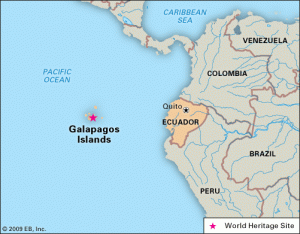
THE EXPLANATION:
Value Addition:
A volcano is an opening in the earth’s crust through which gases, molten rocks materials (lava), ash, steam etc. are emitted outward in the course of an eruption. Volcanic activity is an example of an endogenic process.

Difference between Magma and Lava:
THE CONTEXT: The Ministry of External Affairs signed an agreement with Tata Consultancy Services Limited for the second phase of the Passport Seva Programme (PSP), one of the several Mission Mode Projects (MMPs) of the Government of India.
THE EXPLANATION:
The latest agreement will facilitate the next phase of the PSP termed PSP-V2.0. The $1 billion agreement will focus on faster delivery of passports to the citizens and create a more effective integration between various wings of the Government like the MEA and the local police network that can work in harmony for verification of applicants and quick tracing in case of emergency situations.
What are the features of the new passport initiative programme?
What will be the new features of PSP-V2.0?
How different will e-passports be from the current passports?
Q1. Consider the following statements about AIIB.
Which of the statements given above are correct?
a) 1 and 2 only
b) 2 and 3 only
c) 1 and 3 only
d) 1, 2 and 3
THE CONTEXT: The Union Cabinet, chaired by the Prime Minister has approved the Memorandum of Understanding (MoU) between India and Nepal for the construction of a bridge over Mahakali River at Dharchula (India)- Dharchula (Nepal).
THE EXPLANATION:
As close neighbours, India and Nepal share unique ties of friendship and cooperation characterized by an open border and deep-rooted people-to-people contacts of kinship and culture. Both India and Nepal have been working together on different regional forums i.e. SAARC, BIMSTEC as well as global fora.
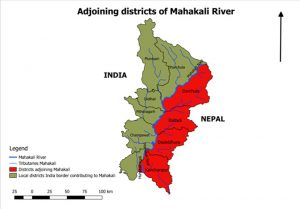
IMPORTANCE:
THE CONTEXT: The Government of India in consultation with the Reserve Bank of India has decided to allow a discount of Rs 50 (Rupees Fifty only) per gram from the issue price to those investors who apply online, and the payment is made through digital mode. For such investors, the issue price of Gold Bond will be Rs 4,736 (Rupees Four thousand seven hundred thirty-six only) per gram of gold.
THE EXPLANATION:
About the Sovereign Gold Bond Scheme:

Merits of investing in gold bonds:
Demerits of sovereign gold bonds
THE CONTEXT: India is likely to overtake Japan as Asia’s second-largest economy by 2030 when its GDP is also projected to surpass that of Germany and the UK to rank as world’s No.3, according to the IHS Markit report.
THE EXPLANATION:
THE REPORT HIGHLIGHTS:
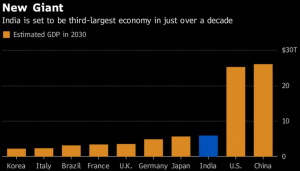
THE CONTEXT: According to first advance estimates of the National Statistical Office (NSO), India’s gross domestic product (GDP) is estimated to grow 9.2% in the financial year 2021-22.
THE EXPLANATION:

Mining spurt
GLOSSARY:
About National Statistical Office (NSO) :
|
THE CONTEXT: A new record has been set by the Chinese ‘artificial sun’ or the experimental advanced superconducting tokamak (EAST) fusion energy reactor in Hefei as it ran at 70 million°C for 1,056 seconds, which is over 17 minutes. The record was apparently achieved.
THE EXPLANATION:
ABOUT EXPERIMENTAL ADVANCED SUPERCONDUCTING TOKAMAK (EAST)
HOW DOES THE ‘ARTIFICIAL SUN’ EAST WORK?
WHY IS FUSION BETTER THAN FISSION?
Which other countries have achieved this feat?
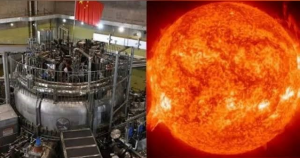
Value Addition:
What is Nuclear Fusion?
Nuclear fusion is a reaction through which two or more light nuclei collide to form a heavier nucleus. The nuclear fusion process occurs in elements that have a low atomic number, such as hydrogen. Nuclear Fusion is the opposite of nuclear fission reaction in which heavy elements diffuse and form lighter elements. Both nuclear fusion and fission produce a massive amount of energy.
[WpProQuiz 132]
[WpProQuiz 131]
THE CONTEXT: Researchers found that global air temperature decreases by 0.03~0.08 °C, with strong regional contrasts and inter-annual variability, after 50 years of large-scale bioenergy crop cultivation.
THE EXPLANATION:
Importance:
What are Bioenergy Crops?
Impacts on Environment:
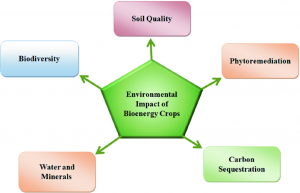
THE CONTEXT: The Union Ministry of Food Processing Industries launched six, One District One Product (ODOP) brands under the Pradhan Mantri Formalizations of Micro food processing Enterprises (PMFME) Scheme.
THE EXPLANATION:
Value Addition:
PMFME Scheme
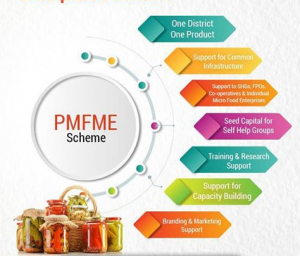
A major component of the scheme
One District One Product
About NAFED:
THE CONTEXT: The notification from the Union Ministry of Environment, Forest and Climate Change intends to “bring out a comprehensive framework for ash utilization including a system of environmental compensation based on the polluter-pays principle”.
THE EXPLANATION:
The New Rule highlights:
BACKGROUND:
What do experts say?
Value Addition:
What is Fly Ash?
Composition:
Applications:
Health and environmental hazards:
THE CONTEXT: A new early warning and hazard monitoring system, ThaiAWARE, will provide advanced decision support capabilities to Thailand’s disaster managers, protecting the country’s 70 million residents from natural disasters.
THE EXPLANATION:
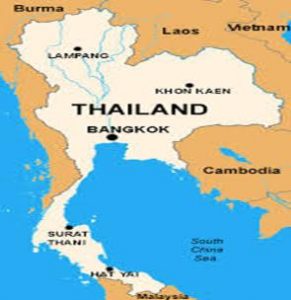
Q1. Bisphenol A (BPA), a cause of concern, is a structural/key component in the manufacture of which of the following kinds of plastics?
a) Low-density polyethylene
b) Polycarbonate
c) Polyethylene terephthalate
d) Polyvinyl chloride
ANSWER FOR 04TH JANUARY 2022
ANSWER: A
Explanation:
Dholavira: a Harappan city, is one of the very few well preserved urban settlements in South Asia dating from the 3rd to mid-2nd millennium BCE. Being the 6th largest of more than 1,000 Harappan sites discovered so far, and occupied for over 1,500 years, Dholavira not only witnesses the entire trajectory of the rise and fall of this early civilization of humankind, but also demonstrates its multifaceted achievements in terms of urban planning, construction techniques, water management, social governance and development, art, manufacturing, trading, and belief system. With extremely rich artifacts, the well-preserved urban settlement of Dholavira depicts a vivid picture of a regional center with its distinct characteristics, that also contribute significantly to the existing knowledge of Harappan Civilization as a whole.
The property comprises two parts: a walled city and a cemetery to the west of the city. The walled city consists of a fortified Castle with attached fortified Bailey and Ceremonial Ground, and a fortified Middle Town and Lower Town. A series of reservoirs are found to the east and south of the Citadel. The great majority of the burials in the Cemetery are memorial in nature.
[WpProQuiz 130]
THE CONTEXT: The Mines Ministry has created a joint venture (JV) company — Khanij Bidesh India (KABIL) — with participating interest from National Aluminium Company (NALCO), Hindustan Copper (HCL) and Mineral Exploration Corporation (MECL).
THE EXPLANATION:

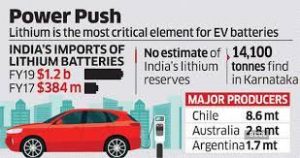
Importance of Cobalt and Lithium:
THE CONTEXT: NPCI Bharat BillPay (NBBL), the wholly-owned subsidiary of National Payments Corporation of India (NPCI), has introduced the ‘Unified Presentment Management System’ (UPMS) to simplify bill payments in the country.
THE EXPLANATION:
UNIFIED PRESENTMENT MANAGEMENT SYSTEM (UPMS)
DEPLOYMENT OF UPMS
SIGNIFICANCE OF UPMS
ABOUT NPCI
PRODUCTS OF NPCI
THE CONTEXT: Chilika Lake, the largest brackish water lake and wintering ground of the birds in the Indian subcontinent saw a million birds, including uncommon Mongolian gull, visiting the waterbody.
THE EXPLANATION:
VALUE ADDITION:
SIGNIFICANCE OF CHILIKA LAKE:
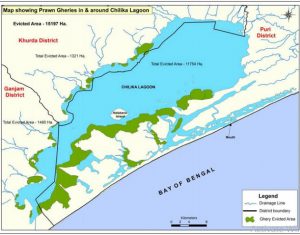
ABOUT BNHS:
THE CONTEXT: Rainfall trend analysis of Africa published in the journal Remote Sensing showed a significant increase in annual rainfall at the national level from 1983 to 2020 in almost all regions of the continent, except those in the south and the east.
THE EXPLANATION:
BACKGROUND:
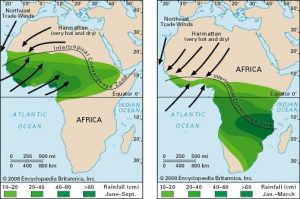
THE CONTEXT: The Centre wants the States to share more intelligence inputs through the Multi-Agency Centre (MAC), a common counter-terrorism grid under the Intelligence Bureau (IB) that was made operational in 2001 post-Kargil war.
THE EXPLANATION:
WHAT IS THE NEED?
According to the Home Ministry, “It is highlighting the continued threats of terrorism and global terror groups, terror financing, narco-terrorism, organized crime-terror nexus, illicit use of cyberspace, movement of foreign terrorist fighters, it also stressed upon the need for better coordination and synergy among the central and state security agencies in countering the ever-changing counter-terrorism and security challenges.
ABOUT THE CENTRE
Q1. Which one of the following ancient towns is well-known for its elaborate system of water harvesting and management by building a series of dams and channelizing water into connected reservoirs?
ANSWER FOR 04TH JANUARY 2022
ANSWER: C
[WpProQuiz 129]
THE CONTEXT: China is constructing a bridge in eastern Ladakh connecting the north and south banks of Pangong Tso (lake), which will significantly bring down the time for the People’s Liberation Army (PLA) to move troops and equipment between the two sectors.
THE EXPLANATION:

About Pangong Lake
THE CONTEXT: The Reserve Bank of India (RBI) has come out with the framework for facilitating small-value digital payments in offline mode, a move that would promote digital payments in semi-urban and rural areas.
THE EXPLANATION:
THE CONTEXT: Millions of Indians were pushed into poverty during the Covid-19 pandemic, but the period post the initial strict lockdown also saw a decline in income inequality in the country.
THE EXPLANATION:
THE CONTEXT: States are seeking an extension of GST compensation for five more years.
WHAT IS GST COMPENSATION?
HOW IS IT FUNDED?
WHO PAYS COMPENSATION TO WHOM? WHEN?
FOR HOW LONG WILL IT BE PAID?
WHY ARE STATES DEMANDING AN EXTENSION OF THE COMPENSATION?
THE CONTEXT: After a rather muted 2021 in terms of satellite launches, the Indian Space Research Organisation (ISRO) is gearing up for a number of missions in 2022 including the launch of the first unmanned mission of Gaganyaan, its Chairman, K. Sivan said.
THE CONTEXT: Gandhi Sagar Dam on Chambal River in Madhya Pradesh is in need of immediate repair, warned a new CAG report. It is one of the five water reservoirs of national importance.
THE EXPLANATION:
ABOUT GANDHI SAGAR DAM
Q1. With reference to Madanapalle of Andhra Pradesh, which one of the following statements is correct?
a) PingaliVenkayya designed the tricolor Indian National Flag here.
b) PattabhiSitaramaiah led the Quit India Movement of the Andhra region from here.
c) Rabindranath Tagore translated the National Anthem from Bengali to English here.
d) Madame Blavatsky and Colonel Olcott set up headquarters of Theosophical Society first here.
ANSWER FOR 31STDECEMBER 2021
Answer: D
Explanation:
Please refer to the following map of the Indus River System.
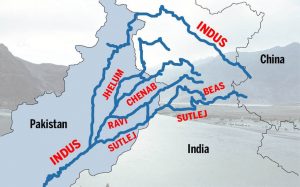
[WpProQuiz 128]
THE CONTEXT: The Odisha Forest and Environment Department has completed its first-ever radio-tagging of the Indian pangolin in an attempt to standardise the rehabilitation protocol for the animal in the State.
THE EXPLANATION:
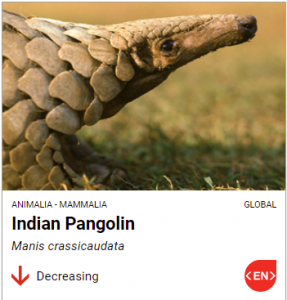
What is Radio Tagging?
Radio-tracking is the technique of determining information about an animal through the use of radio signals from or to a device carried by the animal. Most radio tracking systems involve transmitters tuned to different frequencies (analogous to different AM/FM radio stations) that allow individual identification.
About Indian Pangolin
The Indian pangolin or thick-tailed pangolin is a solitary, shy, slow moving, nocturnal mammal, Unlike other pangolin species, the Indian pangolin does not often climb trees. Pangolins or scaly anteaters (order Pholidota, meaning ‘scaled animals’) are a group of unusual mammals with tough, protective keratin scales.
Distribution: Bangladesh, India, Nepal, Pakistan and Sri Lanka.
Threats:
Conservation status:
THE CONTEXT: Ahead of assembly elections in five states, the Union government approved the issuance of the 19th tranche of electoral bonds which will be open for sale from January 1 to 10 2022.
THE EXPLANATION:
What are Electoral Bonds?

THE CONTEXT: The Government of India has extended the Armed Forces Special Powers Act, 1958 in Nagaland for another six months (June 30, 2022). The decision came days after the Home Ministry had instituted a high-level committee chaired by a Secretary-level officer for examining the possibility of AFSPA repeal in Nagaland.
THE EXPLANATION:
Govt demands repeal of the law
What is Armed Forces Special Powers Act (AFSPA)?

How is a region declared ‘disturbed’?

Criticism of AFSPA:
What should be done?
THE CONTEXT: China’s Ministry of Civil Affairs issued a statement stating that they have ‘standardised’ names for 15 places in Arunachal Pradesh, to be used on Chinese maps. This is the second time China has renamed the names of the places of Arunachal Pradesh.
THE EXPLANATION:
Why is China giving names to places that are in India?
“According to relevant regulations on the management of place names, the department has standardised some place names in China’s South Tibet region. We have released the first batch of the place names in South Tibet (six in total).
The latitude and longitude listed with the names showed those places as Tawang, KraDaadi, West Siang, Siang (where Mechuka or Menchuka is an emerging tourist destination), Anjaw, and Subansiri respectively.
These six places spanned the breadth of Arunachal Pradesh — “Wo’gyainling” in the west, “Bumo La” in the east and the other four located in the central part of the state.
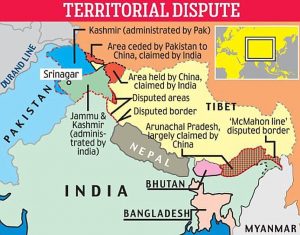
What is China’s argument for claiming these areas?
THE CONTEXT: The Sahitya Akademi announced its prestigious “Sahitya Akademi Awards, YuvaPuraskar as well as Bal Sahitya Puraskar” for 2021 in various languages.
THE EXPLANATION:
Other winners include:
Sahitya AkademiYuvaPuraskar 2021
Other winners of the award include:
Bal Sahitya Puraskar 2021
Other winners include:
The Sahitya Akademi Award
THE PRELIMS PRACTICE QUESTION
| Q1. With reference to the Indus river system, of the following four rivers, three of them
pour into one of them which joins the Indus direct. Among the following, which one is such river that joins the indus direct? (a) Chenab (b) Jhelum (c) Ravi (d) Sutlej ANSWER FOR 30THDECEMBER 2021 Answer: B |
[WpProQuiz 126]
THE CONTEXT: The Goa state Government permitting mining companies to export low-grade iron ore, paving the way for the resumption of mining activity that has been stalled since 2018.
THE EXPLANATION:
Value Addition:
The total recoverable reserves of iron ore in India are about 9,602 million tonnes of hematite and 3,408 million tonnes of magnetite. Chhattisgarh, Madhya Pradesh, Karnataka, Jharkhand, Odisha, Goa, Maharashtra, Andhra Pradesh, Kerala, Rajasthan and Tamil Nadu are the principal Indian producers of iron ore.
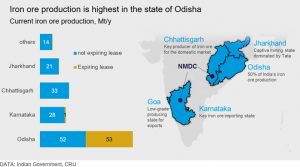
THE CONTEXT: Amid ongoing tensions between the Governor of Maharashtra and the State Government over the election to the Speaker of the Assembly, and the winter session of the state assembly ends but the Governor has not given his consent to the election programme recommended by the Cabinet.
THE EXPLANATION:
What Constitution says?
Article 178 of the Constitution states: “Every Legislative Assembly of a State shall, as soon as may be, choose two members of the Assembly to be respectively Speaker and Deputy Speaker thereof and, so often as the office of Speaker or Deputy Speaker becomes vacant, the Assembly shall choose another member to be Speaker or Deputy Speaker, as the case may be.”
The Constitution does not specify the process of holding these elections; that is left to the state legislatures. It also does not set a timeframe other than to say the elections should be held “as soon as maybe”.
Some states lay down timeframes
A crucial case in Maharashtra
What are the recent amendments?
What are the objections to these amendments?
What is the government’s position?
What is the way ahead?
THE CONTEXT: Niti Aayog with technical support from UNDP, released the first its kind Northeastern Region District SDG Index. The index measures the performance of the district of the eight NE States. This SDG Index will be used as a base for planning of development and welfare activities, education, health care.
THE EXPLANATION:
According to the report, the East Sikkim district of Sikkim has topped the Northeastern Region (NER) District SDG Index 2021-22 while the Kiphire district of Nagaland was ranked last amongst 103 districts in the ranking. Gomati, North Tripura is second, West Tripura is third in the ranking.
What is NER District SDG Index?
Objectives:
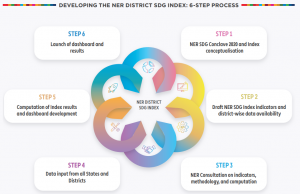
THE CONTEXT: Ministry of Education released the “Atal Ranking of Institutions on Innovation Achievements (ARIIA),” out of which Sevan Indian Institutes of Technology (IITs) have made it to the top 10.
THE EXPLANATION:
What is ARIIA?
Parameters:
THE CONTEXT: Following the two positive indigenization lists barring the import of 209 major platforms and systems, the Defence Ministry notified a list of another 2,500 subsystems and components and 351 more imported items to be made locally in the next three years.
THE EXPLANATION:
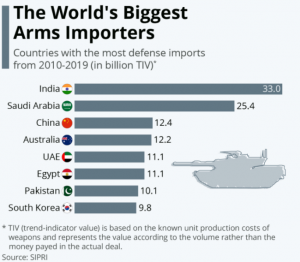
To reduce imports
Emerging technologies

THE CONTEXT: Ahead of the ongoing Rabi season, the Telangana government started crediting money into the bank accounts of eligible beneficiaries in the state.
THE EXPLANATION:
Under the Rythu Bandhu scheme, as many as 66.56 lakh farmers identified as beneficiaries, regardless of the extent of land owned by them, would receive financial assistance in 10 days.
With this, the state government would have disbursed Rs 50,405.63 crore to farmers under the scheme to date, a major landmark since its inception in May 2018.
What is Rythu Bandhu?
How does it compare with the PM-KISAN scheme?
The state government has often said that the Centre’s PM-KISAN (Pradhan Mantri Kisan Samman Nidhi) scheme is a “copy” of Rythu Bandhu. The Telangana government further claims that its own scheme is much better than PM-KISAN.
What about landless farmers?
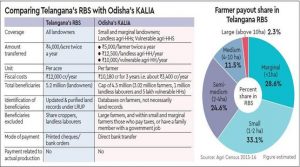
THE CONTEXT: An Israeli airstrike hit a shipment of Iranian weapons in the Syrian port of Latakia on 7th December 2021.
THE EXPLANATION:
Port of Latakia:
Significance:
Major ports in Syria:

|
Q1. With reference to the history of ancient India, Bhavabhuti, Hastimalla andKshemeshvara were famous – a) Jain monks b) Playwrights c) temple architects d) philosophers ANSWER FOR 29THDECEMBER 2021 Answer: D EXPLANATION: ACE2: Angiotensin-Converting Enzyme 2 The protein encoded by this gene belongs to the angiotensin-converting enzyme family of dipeptidyl carboxypeptidases and has considerable homology to the human angiotensin 1 converting enzyme. This secreted protein catalyzes the cleavage of angiotensin I into angiotensin 1-9, and angiotensin II into the vasodilator angiotensin1-7. ACE2 is known to be expressed in various human organs, and its organ- and cell-specific expression suggests that it may play a role in the regulation of cardiovascular and renal function, as well as fertility. In addition, the encoded protein is a functional receptor for the spike glycoprotein of the human coronavirus HCoV-NL63 and the human severe acute respiratory syndrome coronaviruses, SARS-CoVand SARS-CoV-2, the latter is the causative agent of coronavirus disease-2019(COVID-19). Multiple splice variants have been found for this gene and the dACE2(or MIRb-ACE2) splice variant has been found to be interferon inducible. |
[WpProQuiz 125]